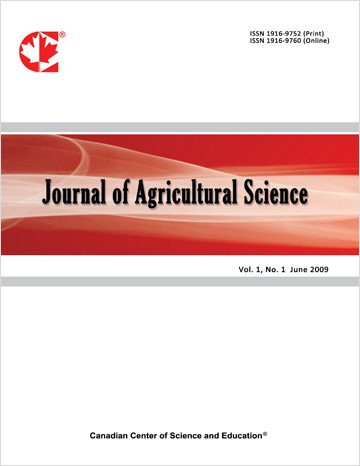Grafting Susceptible Watermelon on Wild Watermelon Root Stocks Improves Response to Moisture Stress and Improves Growth and Yield
- Metseyabeng N. Sehularo
- Ponalo Kgwaakgwaa
- Kelebogile Madumane
- Lesego T. Sewelo
- Utlwang Batlang
- Rosemary Kobue-Lekalake
- Goitseone Malambane
Abstract
The rising temperatures and reduced rainfall because of climate change have contributed to severe droughts which subsequently affect crop production leading to global food insecurity. One crop particularly vulnerable to these changes is watermelon, a nutritious fruit rich in vitamins and antioxidants, but highly sensitive to water scarcity. Insufficient moisture during the crop establishment period results in a less vigorous plant leading to reduced yield thus it is crucial to develop strategies that can reduce the effects of drought stress. Grafting is one strategy used and has proven to be incredibly powerful in protecting against both biotic and abiotic stresses. Thus, the current study focuses on morphological and physiological responses of grafted watermelons subjected to drought stress. The results show that grafted watermelons reported a more noticeable decline in stomatal conductance compared to cultivated watermelons, indicating that they possess increased drought tolerance as they responded quickly closing their leaf stomata displaying a drought avoidance mechanism. Chlorophyll fluorescence results reported that grafted watermelons had the highest (Fv/Fm, Phi2 and phiNPQ) compared to cultivated watermelon indicating they maintained PSII efficiency better and possessed physiological traits that contributed to drought tolerance. Morphological results showed that wild watermelons flowered and matured earlier than all cultivars indicating it possesses a drought escape mechanism that can be harnessed and incorporated into grafting for breeding for drought resistance. In terms of yield related parameters grafted watermelons produced more fruits with higher weight than cultivated watermelon, indicating increased rooting capacity, making them more vigorous and efficient in absorbing water and nutrients, resulting in larger fruit sizes and better overall yields. Most importantly, grafting did not affect the quality of watermelon solutes. This research offers valuable understanding of how wild watermelon can be used as an ideal rootstock in grafting its susceptible relatives to mitigate drought stress and increase yield of watermelons.
- Full Text:
 PDF
PDF
- DOI:10.5539/jas.v17n6p1
Journal Metrics
- h-index: 67
- i10-index: 839
- WJCI (2023): 0.884
- WJCI Impact Factor (2023): 0.196
Index
- AGRICOLA
- AGRIS
- BASE (Bielefeld Academic Search Engine)
- Berkeley Library
- CAB Abstracts
- ChronosHub
- CiteSeerx
- CNKI Scholar
- Copyright Clearance Center
- CrossRef
- DESY Publication Database
- DTU Library
- e-Library
- EBSCOhost
- EconPapers
- Elektronische Zeitschriftenbibliothek (EZB)
- EuroPub Database
- Excellence in Research for Australia (ERA)
- Google Scholar
- Harvard Library
- IDEAS
- iDiscover
- Jisc Library Hub Discover
- JournalTOCs
- KindCongress
- LIVIVO (ZB MED)
- LOCKSS
- Max Planck Institutes
- Mendeley
- MIAR
- Mir@bel
- NLM Catalog PubMed
- Norwegian Centre for Research Data (NSD)
- Open J-Gate
- OUCI
- PKP Open Archives Harvester
- Polska Bibliografia Naukowa
- Qualis/CAPES
- RefSeek
- RePEc
- ROAD
- ScienceOpen
- Scilit
- SCiNiTO
- Semantic Scholar
- SHERPA/RoMEO
- Southwest-German Union Catalogue
- Standard Periodical Directory
- Stanford Libraries
- SUDOC
- Swisscovery
- Technische Informationsbibliothek (TIB)
- Trove
- UCR Library
- Ulrich's
- UniCat
- Universe Digital Library
- WorldCat
- WRLC Catalog
- Zeitschriften Daten Bank (ZDB)
Contact
- Anne BrownEditorial Assistant
- jas@ccsenet.org
